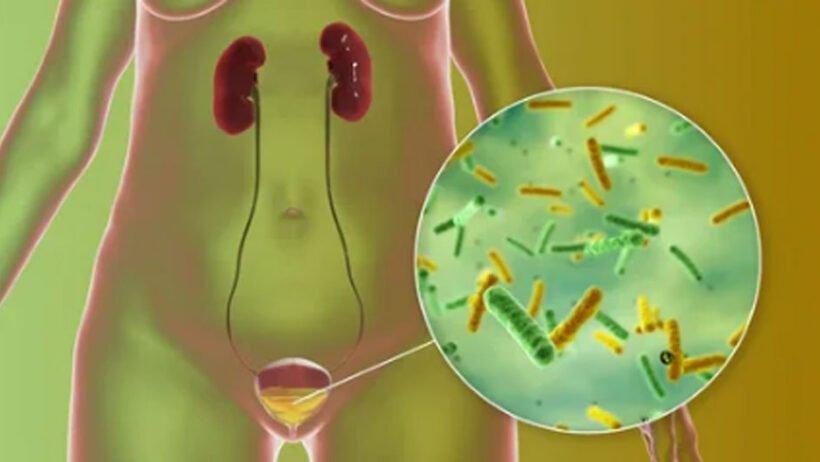Urinary tract infections (UTIs) are among the most common bacterial infections, affecting millions of people worldwide each year. In Dyer, Indiana, cases of UTIs are frequently seen in clinics, urgent care centers, and primary care offices. While many UTIs are mild and easily treatable, ignoring their early warning signs can lead to serious complications such as kidney infections, recurrent infections, and even bloodstream infections (sepsis) in severe cases.
This article takes a closer look at UTI Dyer cases, with a focus on the symptoms you should never ignore, why early detection matters, and what steps you should take if you notice these warning signs.
1. Understanding UTI Dyer Cases
A UTI occurs when bacteria—most often Escherichia coli (E. coli)—enter the urinary tract and begin to multiply. The urinary tract includes the kidneys, ureters, bladder, and urethra. While UTIs can happen anywhere in the tract, they are most commonly lower urinary tract infections affecting the bladder (cystitis) or urethra (urethritis).
In Dyer, as in other parts of the U.S., women are more prone to UTIs due to their shorter urethras, but men, children, and older adults are also affected. Left untreated, bacteria can ascend to the kidneys (pyelonephritis), causing more severe symptoms and potentially long-term damage.
2. Why Recognizing Symptoms Early Is Critical
The earlier you identify a UTI Dyer case, the easier it is to treat. Mild infections can often be resolved with a short course of oral antibiotics, but delayed diagnosis can allow bacteria to spread, leading to:
- Kidney infections (more painful, longer recovery).
- Chronic or recurrent UTIs that require longer treatment.
- Urosepsis, a dangerous spread of infection into the bloodstream.
Many people dismiss early symptoms as dehydration, mild irritation, or a temporary bladder issue—only to face worsening discomfort later.
3. The Key Symptoms You Shouldn’t Ignore
3.1 Burning Sensation During Urination
One of the earliest and most common signs of a UTI Dyer case is a burning, stinging, or sharp pain while urinating. This happens when bacteria irritate the urethral lining. If you experience this symptom—even without other signs—it’s best to get checked promptly.
3.2 Frequent Urge to Urinate
Feeling the need to urinate more often than usual, even if little urine comes out, is another hallmark symptom. This happens because your bladder becomes inflamed, triggering false “full” signals to the brain.
3.3 Cloudy or Foul-Smelling Urine
Healthy urine should be pale yellow and have a mild smell. In UTI Dyer patients, bacteria, white blood cells, and waste products can make urine cloudy or give it a strong, unpleasant odor.
3.4 Blood in the Urine (Hematuria)
Visible blood in the urine or pinkish urine is a clear warning sign of a bladder or kidney infection. Even if it appears only once, seek medical attention immediately.
3.5 Pelvic or Lower Abdominal Pain
Inflammation in the bladder or urethra can cause pressure, cramping, or discomfort in the lower abdomen or pelvic region.
3.6 Back or Side Pain
If a UTI Dyer case progresses to the kidneys, you may experience pain in the flanks (sides) or lower back, often accompanied by fever or chills. This requires urgent medical evaluation.
3.7 Fever and Chills
A simple bladder infection typically doesn’t cause fever. If you develop a temperature above 100.4°F (38°C) along with urinary symptoms, it may indicate a more serious kidney infection or systemic spread.
3.8 Nausea and Vomiting
While less common in mild UTIs, nausea and vomiting often occur with severe or upper tract infections, signaling the need for urgent care.
4. Symptom Differences Between Men and Women
Women often notice UTIs early due to the burning sensation and increased frequency of urination. In contrast, men sometimes dismiss early signs, attributing them to prostate irritation or dehydration, which can delay diagnosis.
Men may also experience additional symptoms such as:
- Pain in the rectal area (due to prostate involvement).
- Difficulty starting urination or a weak urine stream.
5. High-Risk Groups Who Should Be Extra Alert
Certain individuals are more prone to severe UTI Dyer cases or complications and should seek immediate evaluation at the first sign of symptoms:
- Pregnant women – UTIs can increase the risk of preterm labor.
- Older adults – May present with confusion rather than typical symptoms.
- People with diabetes – Weakened immune response makes infections harder to fight.
- Patients with catheters – Higher chance of bacterial entry.
- Men with prostate problems – Urine retention encourages bacterial growth.
6. Why Some People Ignore Symptoms—and Why That’s Risky
Many people delay treatment because they:
- Hope symptoms will resolve on their own.
- Misinterpret them as dehydration or dietary irritation.
- Fear the inconvenience or cost of a doctor visit.
Unfortunately, UTIs rarely go away without treatment, and the longer bacteria are allowed to multiply, the greater the risk of complications.
7. How UTI Symptoms Are Diagnosed in Dyer
If you present with suspicious symptoms, most Dyer healthcare providers will perform:
- Urinalysis – Tests for bacteria, blood, and white blood cells.
- Urine Culture – Identifies the exact bacteria causing the infection.
- Physical Examination – To check for abdominal or back tenderness.
In recurrent or complicated cases, imaging studies like an ultrasound or CT scan may be ordered to look for structural abnormalities.
8. What to Do If You Notice Symptoms
If you suspect a UTI Dyer case:
- See a healthcare provider promptly – Early antibiotics can stop the infection before it spreads.
- Stay hydrated – Water helps flush bacteria from the urinary tract.
- Avoid irritants – Reduce caffeine, alcohol, and spicy foods until symptoms improve.
Never attempt to self-treat with leftover antibiotics, as incomplete or inappropriate treatment can cause antibiotic resistance.
9. Preventing UTIs in the First Place
While some UTIs can’t be prevented entirely, you can lower your risk by:
- Drinking plenty of fluids.
- Urinating after sexual activity.
- Wiping front to back (for women).
- Avoiding prolonged holding of urine.
- Wearing breathable cotton underwear.
10. When a UTI Becomes an Emergency
Seek immediate care if you experience:
- High fever with urinary symptoms.
- Severe back or flank pain.
- Confusion or sudden disorientation (especially in older adults).
- Nausea/vomiting with inability to keep fluids down.
These could signal that a bladder infection has progressed to the kidneys or entered the bloodstream.
Conclusion
A UTI Dyer case may start with mild discomfort, but ignoring its symptoms can have serious consequences. Recognizing early signs—burning urination, frequent urges, cloudy urine, pelvic pain—and seeking timely medical attention can prevent complications and speed recovery. Whether you’re at higher risk or generally healthy, the key to managing UTIs effectively is not ignoring symptoms and acting quickly.
FAQs
- Can a UTI in Dyer go away on its own without antibiotics?
While mild cases might improve temporarily, most UTIs require antibiotics to fully eliminate the bacteria. Without treatment, symptoms often return and may worsen. - How soon should I see a doctor if I suspect a UTI?
You should contact a healthcare provider within 24–48 hours of noticing symptoms to prevent the infection from spreading to the kidneys. - Are UTI symptoms in older adults different from younger adults?
Yes. Older adults may have fewer urinary symptoms and instead present with confusion, agitation, or weakness, making early detection more challenging.








